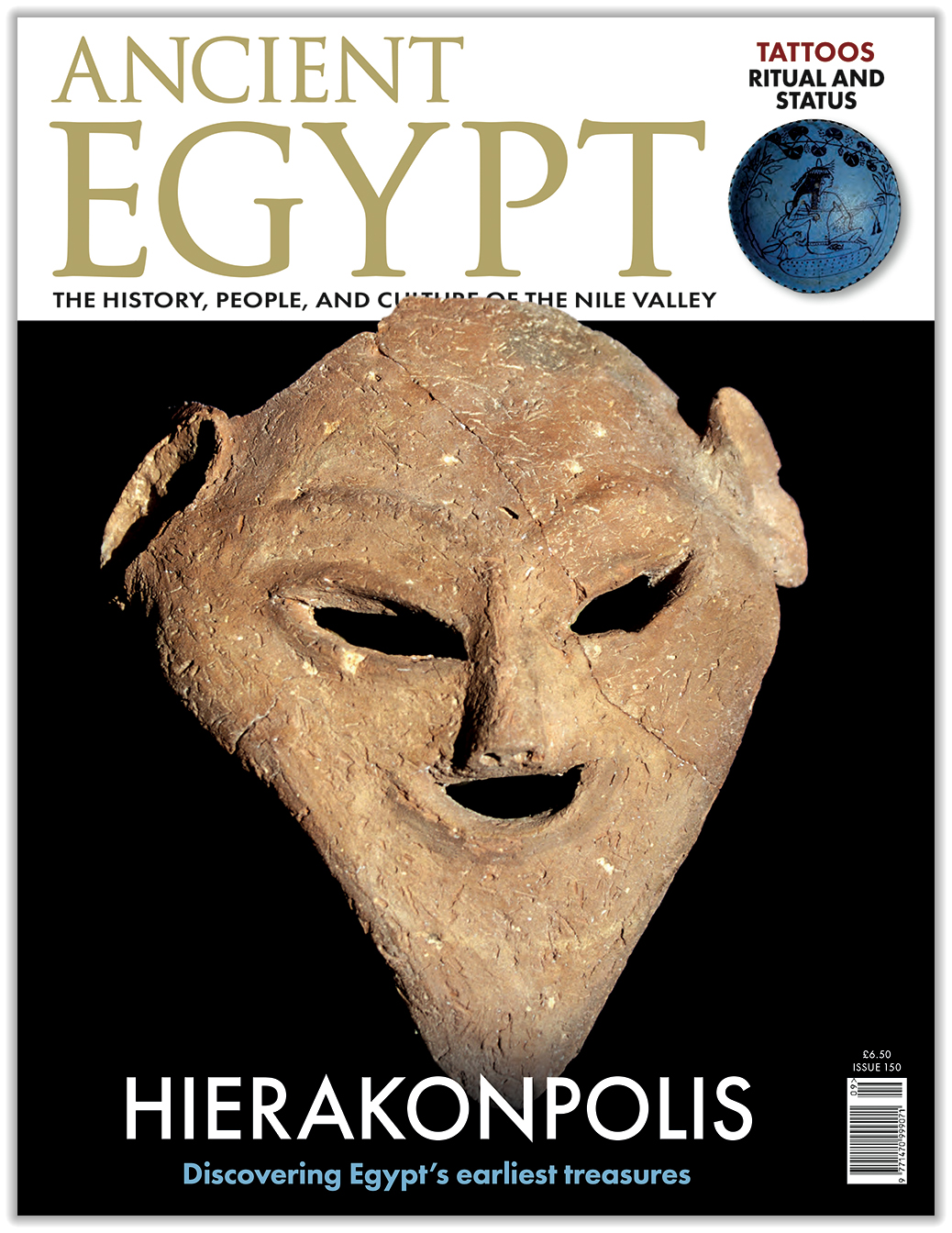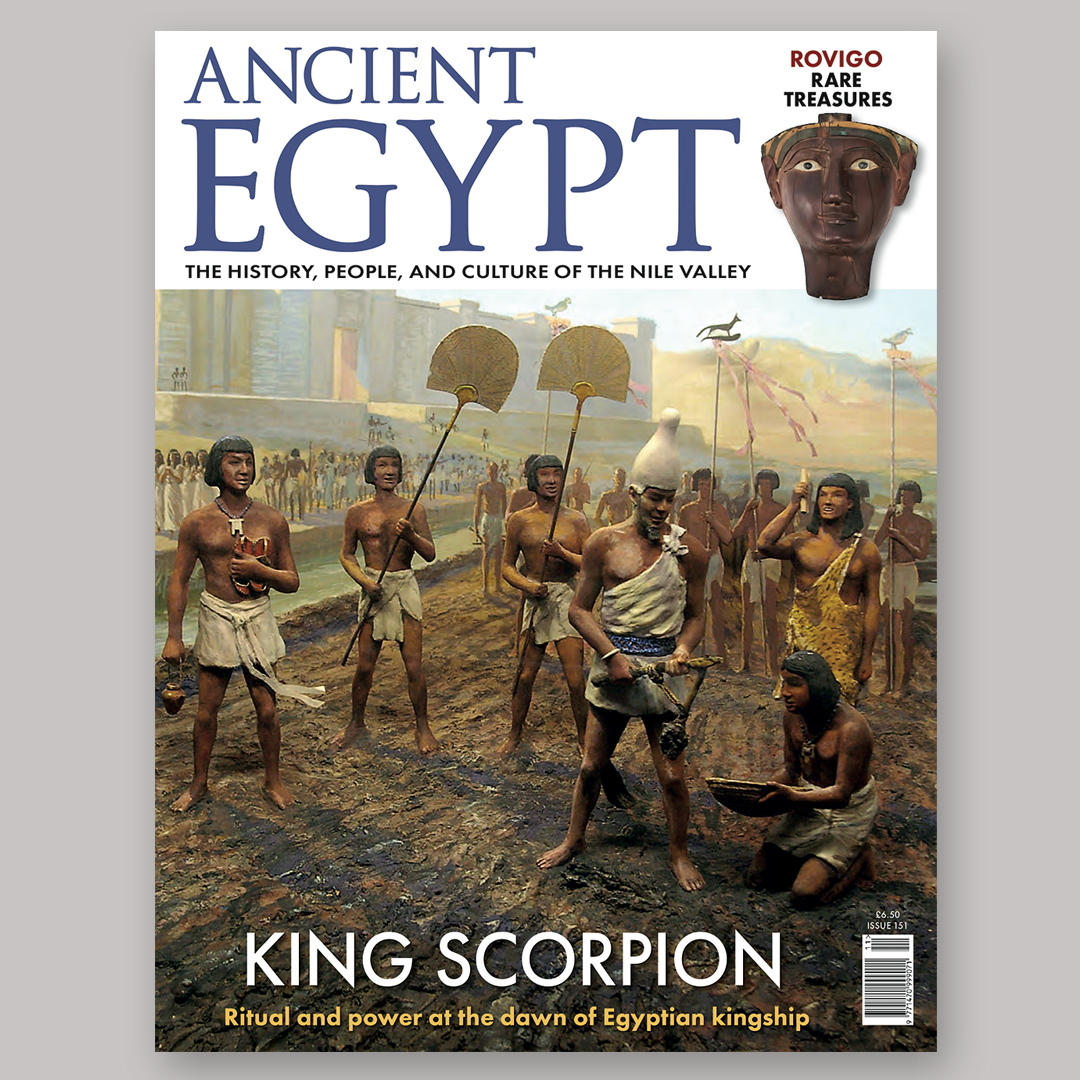AE 150 - Sep / Oct 2025
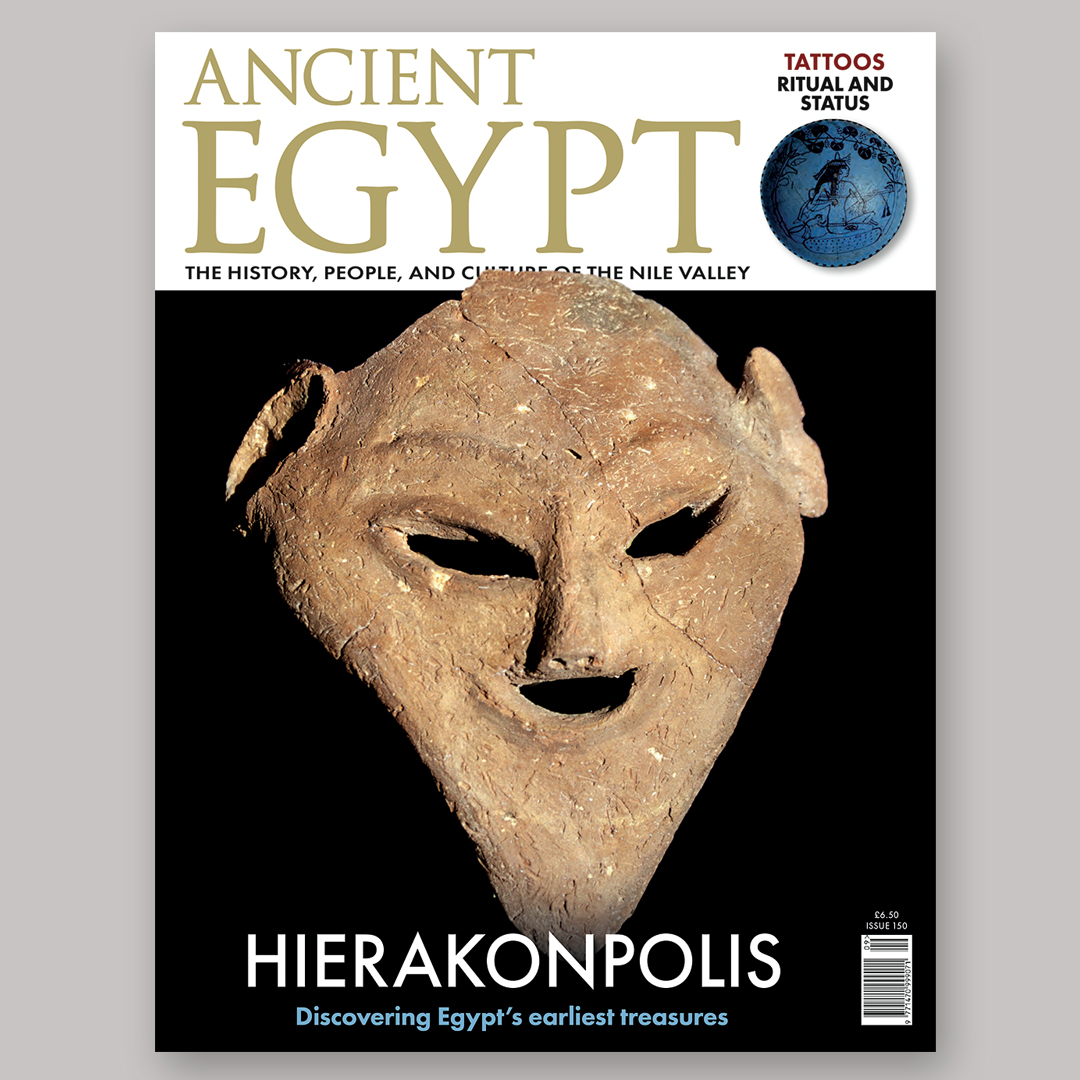
Many of the artefacts discovered at Hierakonpolis, such as the the earliest periods of the ancient civilisation of the Nile Valley. But two of the discoveries described by Julian Heath in his article are both unique and uncomfortably disturbing in appearance: the pottery face masks found in an elite cemetery. The masks were clearly designed to be worn over the face. Were they the earliest examples of what many hundreds of years later became the golden mask that graced Tutankhamun’s mummy?
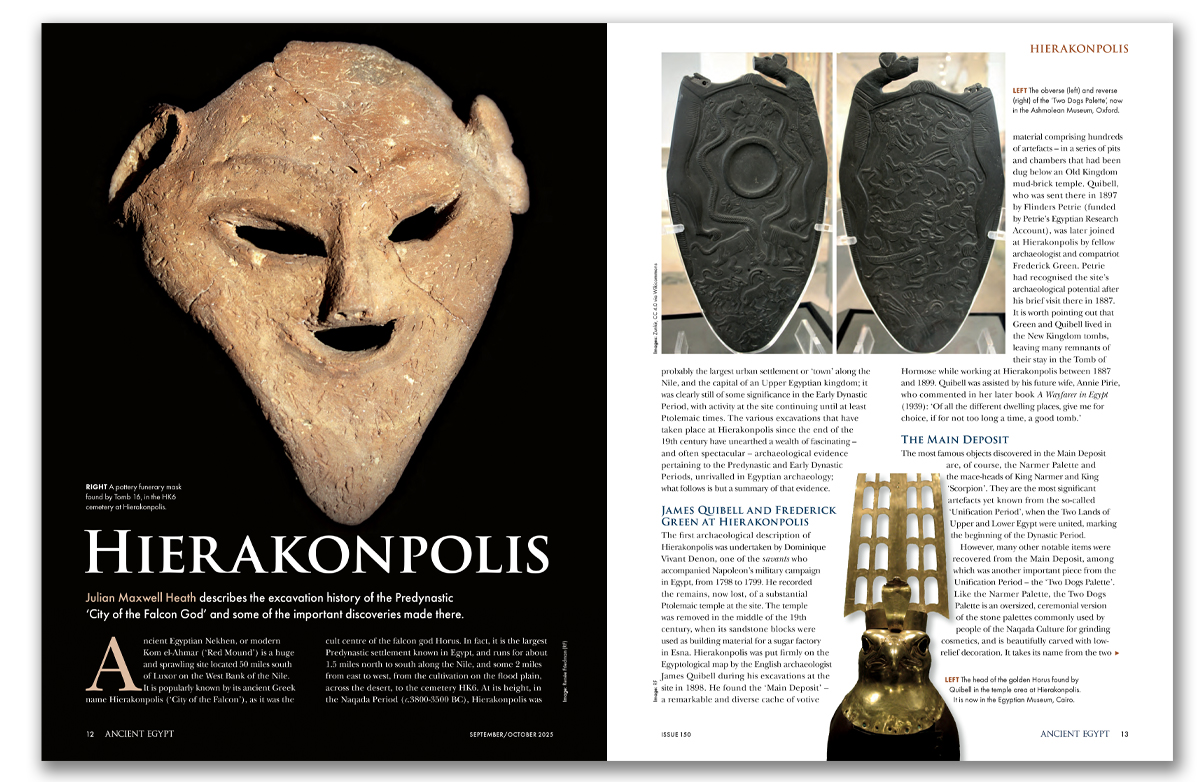
In addition to providing several of the images used in Julian’s article, Renée Friedman, the Director of the Hierakonpolis Project, concludes her two-part article on tattooing in ancient Egypt, this time focusing on the New Kingdom and later periods.
In the same way that the excavations at Hierakonpolis have thrown light on Predynastic Egypt, the thousands of papyri found at Oxyrhynchus have given us fascinating information about the private lives of the citizens of Ptolemaic and Roman Egypt. Richard J Britton spills the beans!
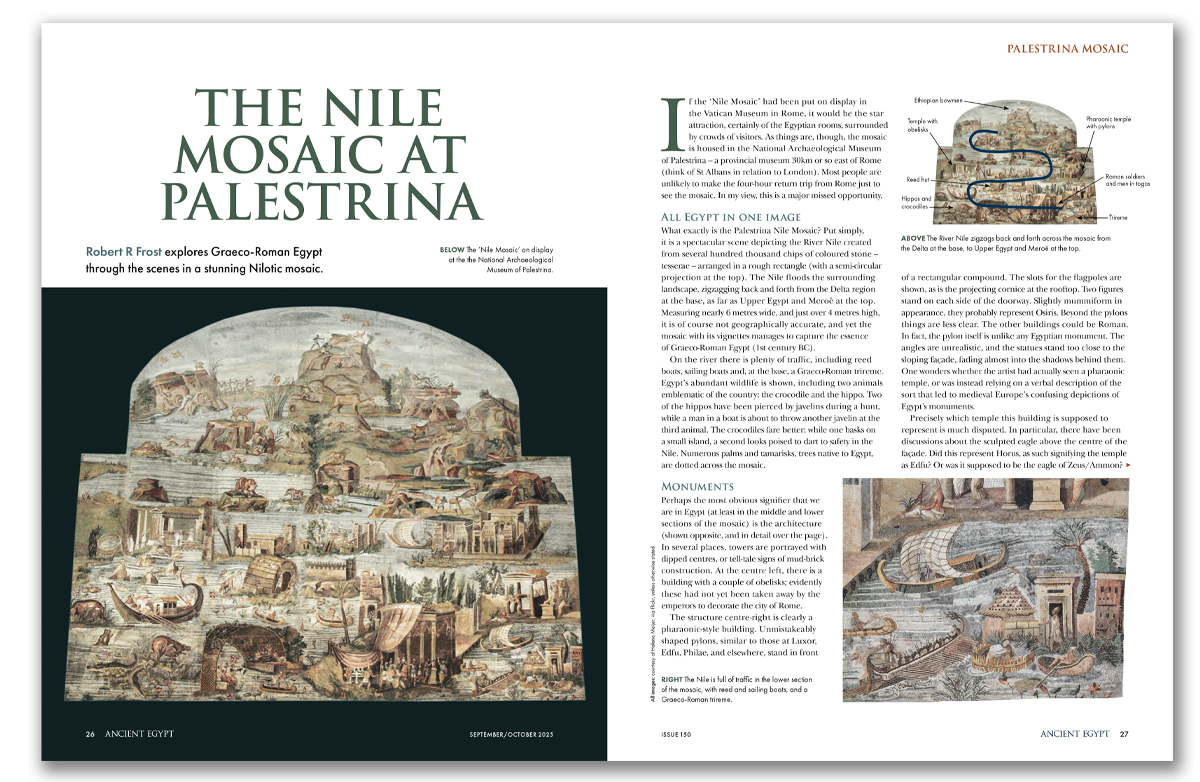
Several articles in this issue deal with aspects of Egyptology that have received less attention than they deserve. Because of its location, some 30km from Rome, few tourists have seen the Palestrina Mosaic described by Robert R Frost, and even fewer have made the difficult journey to the Temple of Qasr el-Sagha in the Fayum, described by Geoffrey Lenox-Smith. Wolfram Grajetzki gives us an account of the life and times of one of the lesser-known Middle Kingdom pharaohs, Senusret II, and Hilary Forrest brings to our attention a 19th-century amateur Egyptologist whose (unusual) name has been almost forgotten: Aquila Dodgson.

Longer-term readers of AE may remember an excellent series of articles about Gebel el-Silsila that appeared from 2020 to 2022 in AE 113 to AE 130. The articles were written by the Co-directors of the Gebel el-Silsila Project, John Ward and his wife Maria Nilsson. As we go to press, the sad news has reached us of the untimely passing of John, whose work at the site began as early as 2007, and who has transformed our knowledge of this ancient quarry site, as well as providing employment and training to the local community. Our thoughts and condolences are with Maria and their family.
